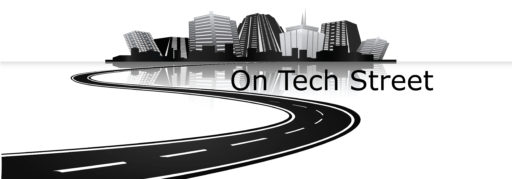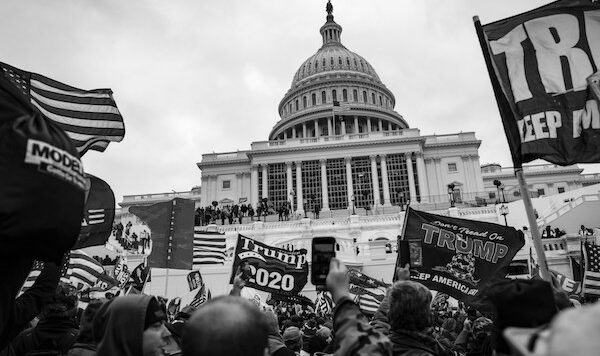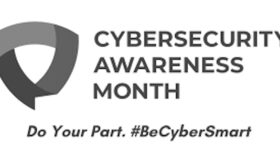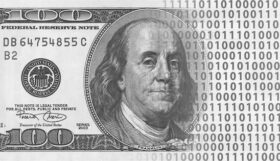Technology Identifying Capitol Rioters
One of the worst days for American Democracy occurred on January 6th. A mob of protestors, egged on by the president, stormed the Capitol to stop the counting of the electoral votes and the official naming of Joe Biden as the new president-elect.
One of the worst days for those rioters is coming. The FBI is right now using several different technologies to track down and identify each one of them. Its not going to be hard because nearly all of them were carrying a tracking device. This tracking device will tell the FBI exactly where they were, how they got there, who they spoke to before, during and after the riot and even who was with them and what they saw and did. What device is this you ask? The mighty cell phone of course!
Smartphone tracking technology
Rioters are about to learn a simple fact; smartphones are great spies and even better snitches. Every rioter that carried a smartphone can be located using the GPS location function of the phone. Most people don’t know or don’t care that their phone location function is turned on. But rioters that stormed the Capitol will have a hard time denying where they were. Their phone, equipped with the GPS locator, will reveal where they were down to about 6 feet. The location tracking will tell law enforcement not only where they were but what route they took to get there.
This technology has been in use by law enforcement for sometime. Police in various cities around the country have used phone location data in criminal investigations. They have reached out to Google and others to ask for the number and location of every smartphone within a certain distance of a crime. The cops use this method to track down suspects and witnesses.
Protestors at the Trump rally can be identified and how they got to the Capitol is now recorded. The GPS can create a map of the exact route they took to get to the Capitol and how fast they were going. So law enforcement using this record can tell you if you walked or drove to the Capitol. Every step the rioter took can be traced.
And every call the rioter made that day can be traced. Every smartphone, even when not in use, pings the closest cell tower on a regular basis. This does two things, first it adds to location information and it also records where the caller was because the cell signal will bounce from one cell tower to another until it reaches its destination And the person on the other end of the call is is also identified. And now the cops know who you called, where you were when you called them, how long you talked.
Stingray technology
Another interesting technology that law enforcement is using is call a Stingray. This is actually a device that acts like a cell tower but really isn’t. Stingrays are known as “cell site simulators” or “IMSI catchers.” These devices are highly effective smartphone surveillance tools that mimic cell phone towers and send out signals to trick smartphones in the area into transmitting their locations and identifying information. And before you ask there are numerous federal agencies and police departments across the country who use these devices including Washington D.C.
Now who was near you or who were you traveling with? Smartphones have some interesting features and one can tell the cops who the rioters were standing near when they stormed the Capitol. This technology has come into the public knowledge as a result of the COVID-19 pandemic. With the proper app your smartphone can recognize other smartphones nearby. This is how contact tracing works. Your phone knows the person with the app has been exposed to the virus and thus has exposed you to the virus. Your smartphone will alert you to the exposure.
This technology is highly precise. For example, some smartphone technology can actually tell if you are facing toward or away from the person next to you. Advertising and marketers have used this technology to determine if you are in a romantic relationship with the person closest to you. So now law enforcement can actually tell you not only where you were but who you were with or closest to. This means you cannot deny you were close to someone who who was destroying or stealing property inside the Capitol. So now the cops know what you may have seen.
Capitol wifi network
This technology is so precise that it can determine where the rioters were inside the Capitol. Inside the Capitol there is a wifi network. This network is used by the employees of the Senators and other federal employees. But the wifi is also pinpointing and identifying ever internet capable device in the building. The same way the rioters smartphones pinged the cell towers they also pinged the Capitol wifi network. Now the cops know exactly where each rioter was inside the Capitol. What route they took to get to what location and how long they were inside the building.
Building cameras and facial recognition
Now lets talk about the building security itself even though it was totally inadequate. How many cameras would you guess are inside and around the Capitol and various office buildings. You could guess a couple thousand and be in the ballpark. Each of these cameras recorded the rioters as they stormed the building. Every face that was caught on camera stands a good chance of being recognized and identified. How? First these faces are being fed into a huge database of facial images that include the driver’s license image of nearly every state’s DMV. Add to that the government database of passport and other identification images, images from other state and local images and even databases of some companies. Computers with specialized algorithms and software will sift through these millions of images and identify nearly all of them by name and address. That’s how powerful facial recognition has become.
Protesters who shared images and video from the riot on social media added hundreds of faces to the facial recognition collection.
According to some house members there were some Republican colleagues that allowed protestors to tour the building the day before the riot to do reconnaissance. If that did occur you can bet it was caught on camera.
Traffic cameras
D.C is covered in traffic cameras. And so are the highways around the city in Maryland and Virginia. Every highway and intersection has either a camera, license plate reader or toll detection device. Rioters from around the country will have had their vehicle recorded somewhere in the region. Law Enforcement will know where the driver went and what route he took. This will come in handy as police investigate the placement of pipe bombs outside the Republican and Democratic headquarters and how some rioters came to be at the Capitol. If you drove around the D.C. metro area you’ve been recorded.
Social Media
Another really interesting tool to identifying the rioters is the fact that some could not resist the urge to tell the world what they were doing. Some of the rioters live streamed their activities on Facebook and other social media platforms. In the videos they can be seen outside the Capitol giving their own play-by-play of the events as well as inside the Capitol building raiding offices and even inside the senate chamber itself. You have probably seen the image of the rioter seated at Nancy Pelosi’s desk. Well, he was one of the first to be arrested.

Richard Barnett sitting in Pelosi’s office.
But the social media factor goes much deeper. The police are scanning weeks of social media posts to understand exactly how the riot was planned, paid for and carried out. Users of social media platforms such as Twitter, Facebook and others will soon be the target of search warrants for social media posts. These social media posts will reveal who was doing the planning and how they organized the event. Another factor that social media will reveal is what activities were planned as part of the protests. Law enforcement will soon know if the invasion of the Capitol building was a spontaneous event or if it was planned that way. They will know who was doing what the day of the attack and who was in on the planning and coordination.
Parler
Many of the protesters will have a lot of explaining to do. One of the most popular right wing platforms, Parler, was recently taken down by its cloud provider Amazon. But its gets worst for all those who had a presence on the app. Almost all the data from Parler has been hacked. Hackers claim they have archived massive amounts of public information from the far-right social media app before it was taken down. As a result of the hack every Parler user should understand that every post, deleted or not, has been archived along with your location.
Let me explain how valuable and detailed this information is. One developer has created an interactive map of exactly what was going on inside and outside the Capitol during the riot. Lets take it one step farther. Gizmodo has created an even more detailed map that actually shows Parler users deep inside the Capitol. All this from GPS, video and smartphone data. Parler users, the data on your movements and activities on the day of riot is available to law enforcement.
Breaking it down
Rioters that stormed the Capitol are busted. There is literally now way they could even get into the city of Washington D.C. without being known. Modern and admittedly intrusive technology is serving a real purpose. Law enforcement will be able to establish the name of every person that had anything to do with the riot. Even if they did not participate in or come to the city their comments and support will be known. There is no hiding. We don’t often give the police credit for being on the ball. And we should watch them carefully. But in this situation we must encourage them to use every available bit of data to track these people down. This was an attempt to overthrow the government. We cannot allow these people to just go home after its all over. The long arm of the law and technology must be put into play here. The information and technology is there for this purpose. No one likes to be spied on. But at the same time there is clear justification for having the technology in place to see and hear what is happening. There is no excuse for anyone who was there to slip the law enforcement dragnet. We can see them and name them with the click of the mouse.







